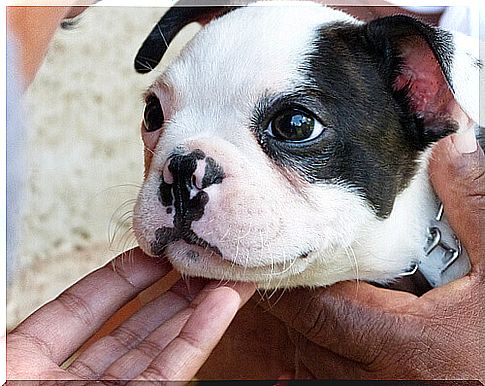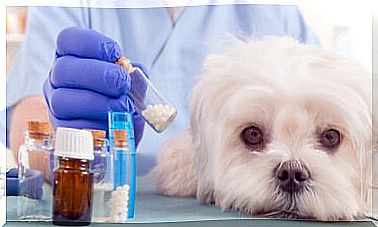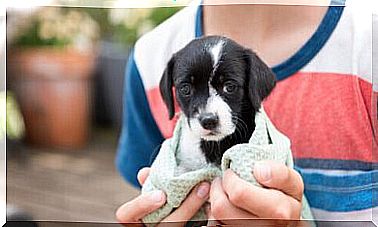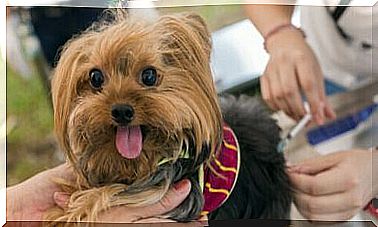Canine Parvo: Here’s What To Know

In recent decades, canine parvo has become one of the most common diseases of our little friends. Although it is not transmissible to humans, it presents a high risk of infection between dogs, as well as a worrying death rate.
The proliferation of parvovirus is linked to the abandonment of animals in unhealthy environments. The uncontrolled reproduction of these specimens leads to the birth of particularly vulnerable stray puppies. This phenomenon increases the risk of the spread of the pathogen.
For this reason, before adopting an animal, it is essential to carry out all the necessary parasite controls and update the vaccination booklet. Prevention is the most efficient way to preserve our best friend’s health.
What is canine parvo?
Canine parvo is an infectious, viral and acute disease affecting the gastrointestinal tract, red blood cells and blood. In rarer cases, it can affect muscle cells (mainly in puppies).

Source: Hugo A. Quintero G.
This disease is caused by a virus called Canine Parvovirus . It was discovered and officially registered in the 1970s, and is therefore considered a very recent disease.
This microorganism is characterized by high resistance that leads it to survive in hostile conditions. It can remain encapsulated for a long time before resuming its activity. The use of common disinfectants, chlorine or other corrosive products are not enough to eliminate it from the home.
This is why it is easy for Parvovirus to contaminate objects, accessories, food bowls, blankets, beds and cages. Before bringing a dog home, it is essential to ensure that it is in compliance with all health regulations and that it has an official and up-to-date certificate with all mandatory vaccines.
Incidence of the disease in puppies
The virus has spread over the years to spread all over the world, worrying veterinarians on all 5 continents. It can affect dogs of all ages, breeds and sizes, but is more common in puppies.
A puppy’s organism is more vulnerable and is therefore more likely to be affected. The dog’s immune system is not yet fully developed and is unable to deal with the numerous microorganisms coming from the external environment. Furthermore, the intense cellular activity in the growth phase facilitates the reproduction of the virus.
Analyzing the data regarding the cases diagnosed in adult dogs and puppies, it emerges that some breeds are more vulnerable to Parvovirus. This is the case with the Labrador Retriever, the Rottweiler and the Doberman.
Canine parvo is an alarming disease due to the low chances of recovery and repeat viral load.
If not treated quickly in the first 36 hours, acute infection can result in the animal’s death within days. Therefore, it is essential to take your dog to the vet right away as soon as you notice any signs of a change in his routine or behavior.
What are the symptoms of parvo in dogs?
As we have seen, the proliferation of Parvovirus within the organism is very intense. It is usually the cause of the general and accelerated decay of the animal’s state of health. Dogs affected by this disease can quickly exhibit the following symptoms:
- Loss of appetite
- Tiredness, fatigue and / or sleepiness
- Temperature
- Dehydration
- He retched
- Severe diarrhea also accompanied by blood
Most of the time death occurs between 48 and 72 hours after the onset of symptoms. For this reason, we reiterate the need to immediately consult the veterinarian in case of any alteration of the animal’s health.
How is parvo in dogs transmitted?
Transmission is direct and the most common form of infection is the fecal-oral one. The disease is more likely to affect animals that have a habit of ingesting their own feces or those of other animals (coprophagia).
However, the resistance of Parvovirus and its ability to nest on surfaces multiply the probability of contagion. The dog can in fact come into contact with the virus through an infected object or by rubbing on a contaminated surface.
Is there a treatment for canine parvo?
There are no specific drugs to artificially eliminate Parvovirus from the body. In fact, the treatment of canine parvovirus consists in strengthening the dog’s immune system, so that it is able to defeat the infection.
For this, the techniques to combat the disease are prevention and timely diagnosis.

How to prevent canine parvo?
Keeping a dog responsibly is the best way to prevent canine parvo. It is essential to respect the vaccination schedule and periodically eliminate all types of parasites from a young age.
Maintaining a balanced diet and often taking the animal to physical activity is essential for a healthy and correct development of its organism.








